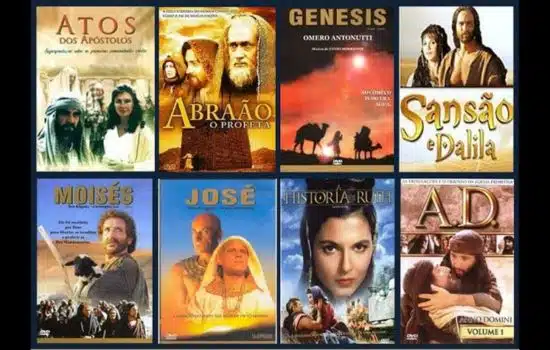Advertisements
Raul Seixas has his history as one of the two greatest names of Brazilian music in the decades of the 70s and 80s. His unique style, which combines rock with strong influences from Brazilian culture, conquest or country.
Seixas's creative lifestyle was largely intellectual and eccentric. He wrote hundreds of songs throughout his career, inspiring generations of musicians and fans with his captivating lyrics.
Advertisements
He grew up in Salvador da Bahia and moved to São Paulo at the age of 18 to dedicate himself to full-time music. His career was marked by several iconic singles such as Metamorfose Ambulante (1975) and Gita (1976).
How Could I Know (Love Was To Go)
O love is a feeling that is difficult to define and even more difficult to understand. More recently, to remember the career of the late Brazilian musician Raul Seixas, it is clear that he was a specialist in capturing the complexity of love through his music.
Advertisements
One of his most popular songs, 'How Could I Know (Love Was To Go)', perfectly expresses the confusion that many feel like trying to understand the idea of love.
SEE ALSO:
A History of Music Layla by Eric Clapton
A tribute to the Nazareth band
10 Soundtracks from Series and Films Netflix 2022
Music uses metaphors to explore how you never really can when love is going to end and serve as a sign that life is full of unexpected changes.
Gold of Tolo
It was considered one of his greatest works. It was released in 1975 and achieved national success, potentially becoming its biggest success album. The title is lively music that combines elements of two traditional Brazilian rhythms with rock influences.
Ouro De Tolo was a reflection of Raul Seixas' musical style at the time; A combination of hard rock and psychedelic influences that creates a unique mix of sounds. The lyrics are inspired by various aspects of Brazilian culture, such as themes such as love, freedom and self-expression.
I'm afraid of rain
Talk directly about your people's fights against depression. Raul recorded this single in 1975, after suffering crises of depression for many years. A lyric expresses its meaning because of its association with sadness; Sometimes, he took days to find the motivation to leave behind the coverage of news that seemed always present in his life.
Crazy Beauty
His legacy continues alive long after his death in 1989, with songs like “Maluco Beleza” still being played throughout the country. In fact, it was considered the most popular music by Raul Seixas in recent years, and for good reasons.
The music itself was a rock song released in 1974 and quickly became a classic. It expresses Seixas' frustration with his lifestyle and general attitude towards life in this era.
The lyrics are full of humor and sarcasm, which makes them even more attractive to the audience. Maluco Beleza effectively captures the spirit of rebellion typical of counterculture music in the 1970s, turning into a song for generations of Brazilians who share these sentiments today.
Try Again
“Tente Outra Vez”, released on the Novo Aeon album in 1975, is a classic by Raul Seixas. His composition is typical of his style, with an epic start that echoes the first rock ballads. The instrumental section of the music consists of a violin and a symphonic background of strings; His lyrics focus on themes of love, loss and redemption.
Instrumentally, “Tente Outra Vez” is rooted in classical Brazilian rhythms and instruments such as o cavaquinho eo pandeiro. It creates a convivial atmosphere that fits perfectly with the uplifting nature of Raul's message: it doesn't matter what life presents to us, we can always tempt anew.
My Friend Pedro
Composed in the 1970s, this classic faixa generated much speculation over the course of two years, mainly in relation to its lyrics. Some credit the music as homage to Paulo Coelho, famous author and close friend of Seixas.
Eu Nasci Ten Thousand Years Ago
The fact that Eu Nasci is ten thousand years ago is a rockabilly classic.
The song is an adaptation of an old traditional folk song of the same name, and the Seixas version becomes one of their most beloved songs here.
It is influenced by musical styles such as blues, psychedelic rock, country and western, jazz, reggae, samba and funk.
Alternative Society
The alternative society is a concept that has been explored in many literary works, popularized especially by Brazilian singer and composer Raul Seixas. Throughout his career, Seixas created his rebellious and subversive music.
His lyrics called for the transformation of restrictive social conventions, defending, instead, an alternative way of life that transcended traditional borders. In his music, he explores themes such as freedom, autonomy and equality to create a utopian vision of a new society where everyone can be happy.
This revolutionary vision was not only present in his letters, but also in his presentations in life, many times filled with energy and pandemic.
He embraced experimental instrumentation to emphasize sound qualities such as dissonance or irony; helping to transmit powerful messages about the need for moving.
Carimbador Maluco
Also known as “Plunct Plact Zum”, it was released in 1976 and quickly gained attention for its melody.
Despite being very popular, the music received a controversial reception from some of Raul Seixas's fans, who credited him with having deviated greatly from his usual style.
Many of us will feel that non-synthpop style music is very different from what we are used to hearing from it, therefore, we will express our dissatisfaction with the fact that it is due to various means of communication.
Gita
Inspired music from Bhagavad-Gitã. Launched in 1974, this style of music is a cornerstone of Hindu culture, revered as a sacred text.
Throughout his career, he explored various musical genres such as rock and roll, samba and blues. His compositions reflect elements of traditional Indian music with its intricate rhythms and melodies.
Gita consists mainly of acoustic instruments combined with synthesizers to create a unique soundscape that turns one of the most reconhecida parts of the Brazilian music already done.





